Pool pavilions: features and varieties
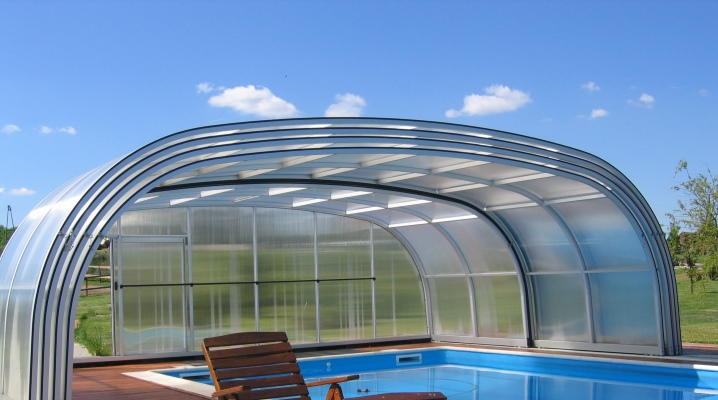
Currently, many owners of country houses and summer cottages are installing swimming pools. Quite often, artificial reservoirs are polluted from the environment, and even modern filters cannot help with cleaning. For this reason, experts recommend installing artificial structures to cover swimming pools.
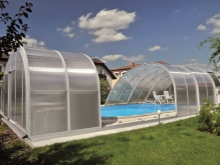
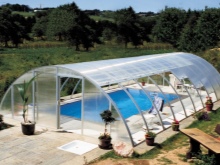
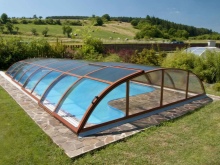
Peculiarities
The presence of the pool contributes to the rest and relaxation of adults and children in the hot season. Installation of a pavilion for a pool on your site is a lot of advantages, the main of which is swimming in clean water. In addition, the roof scatters sunlight, so it is comfortable in the pond even during the peak of the heat. There are practically no drawbacks to these devices, with the exception of the financial costs of purchase and installation. It is also worth noting that, depending on the material of manufacture, each type of canopy may have characteristic disadvantages.
Usually, pool enclosures have the appearance of a light transparent structure. The canopies can be of various shapes and colors, therefore, with the right choice, they will always look appropriate on the territory.
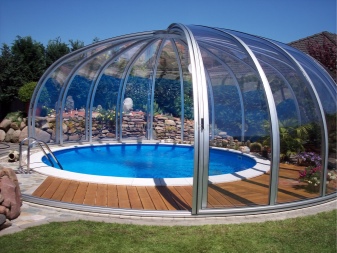
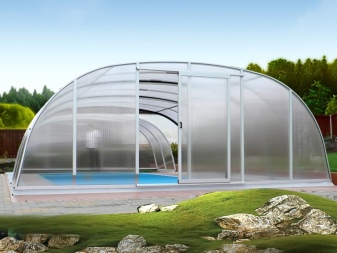
Why is it needed?
Each of the pool owners comes to the idea of the need to cover their pool. The reason for this is to protect the water in the artificial reservoir from the ingress of foreign objects, dust and dirt. A also outdoor pool cover is necessary for many functions.
- Safety of animals and children, which is expressed in the closure of access to water if necessary.
- Savings on chemicals. Since much less contamination will enter the pond, owners will have to clean it less often using chemicals.
- Reliable protection against all kinds of contamination. Pool enclosures limit the possibility of debris and plant leaves getting into the water.
- Reducing the amount of evaporation. In an outdoor pool, the volume of water is quickly lost, especially in the summer.
- Protection against the formation of microorganisms, bacteria, algae. The water in the covered pools does not bloom.
- Possibility to use the reservoir at any time of the year under any weather conditions.
- Protection of bathers from heat and sun.
- Increase in the term of use of the structure. Thanks to the canopy, the pool is protected from damage by mechanical environmental factors, due to which the pools function longer.
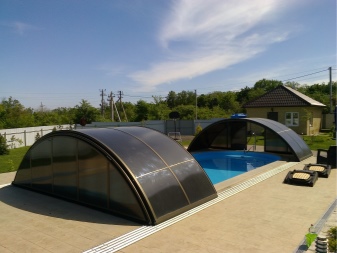
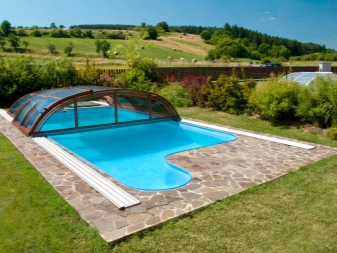
Varieties
Depending on the preferences, as well as the finances of the owner of an artificial reservoir, you can choose a pavilion that has a specific shape, function, color, price category.
Mobile
Mobile pool covers are suitable for various types of water bodies, namely: frame, polypropylene, prefabricated and others. The canopy is supported by aluminum rails; it contains a dense fabric that does not allow ultraviolet rays to pass through. The mobile pavilion has the appearance of a summer tent, it has advantageous characteristics.
- Profitability. The cost of this design is much less than other roof options.
- Easy to assemble and install. The mobile pool shed does not need installation, it is simply placed in the required place. Frame arcs can be bent quite simply to the desired shape.
- Easy transportation, storage. This type of tent can be easily folded, so it does not take up much space during transportation and storage.
- Versatility of application. The mobile roof can be used for various types of artificial reservoirs. If necessary, it can be moved and placed on a different site.
- Large assortment of models. The consumer can buy a round, oval canopy of various colors.
The disadvantages of mobile pavilions can be called their fragility, the ability to use only during the swimming season, since the structure is not able to protect from the cold.
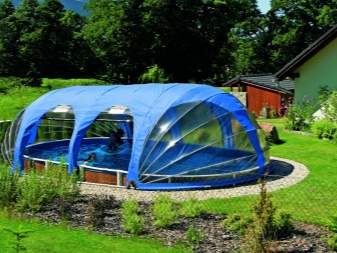
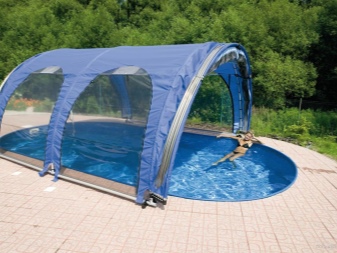
Stationary
Often, the frames of stationary pavilions are made of aluminum, so they are characterized by strength, reliability, and lack of weight. The inserts are made of polycarbonate. The stationary canopy has a one-piece structure with built-in windows and doors.
Roofs of this type for an artificial reservoir contribute to maintaining a comfortable temperature inside the structure, so such a shelter can be used even in winter. A stationary canopy is often attached to the house if the reservoir is located nearby. The main advantages of such a roof are:
- long service life, which is provided by high-quality durable material;
- universal application;
- security;
- use at different times of the year, including winter;
- the ability to make this design with your own hands.
The disadvantages of stationary sheds include a high price, a bulky appearance, and the need for care.
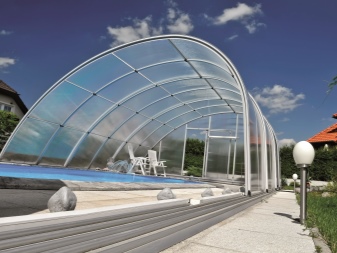
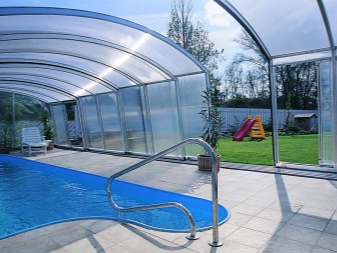
Sliding
This type of pool cover is considered the most practical. The canopies are made up of individual sections that slide using guide rails. Such a roof can be made open, closed or partially closed.
Sliding pavilions can be sliding, sliding and folding, high and low. Under high roofs, people can move freely to their full height, as well as install sun loungers and tables there. Low roofs can only cover the water surface of the pool, so you can only swim under them.
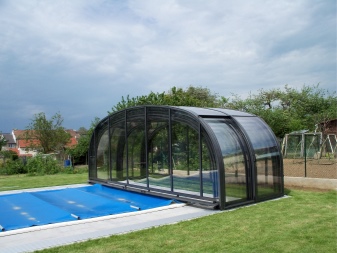

Materials (edit)
To make a canopy for an artificial reservoir, you will need 2 types of materials. The first is to make the frame, and the second is the glazing. Because the structure is constantly in contact with water, it is impractical to install a wooden frame: it will quickly rot, therefore metal is used. Other materials are used for glazing.
Polycarbonate
Polycarbonate can be of 2 types: monolithic and cellular. Monolithic has an external resemblance to glass, while honeycomb is characterized by the presence of internal longitudinal cells. The first option has significant strength, looks aesthetically pleasing and can be used for many years. The second option refers to budget materials, therefore it is in high demand.
Good flexibility is inherent in polycarbonate, so it can be used to glaze a frame of complex shape. The material can be either transparent or colored.
Often people buy transparent polycarbonate because it is light underneath. Colored material darkens the space, if not properly selected, the canopy will cause discomfort to vacationers.
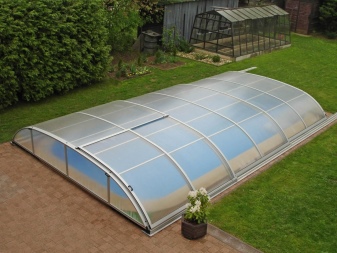
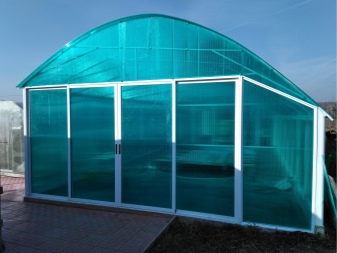
Pvc
PVC film is considered a versatile material for the manufacture of awnings. The film combines an affordable cost and a variety of colors to make the pool cover quite attractive. It is an antibacterial material that provides excellent protection against UV rays. Due to the texture of the structure, PVC does not slip, and also does not create difficulties during installation.
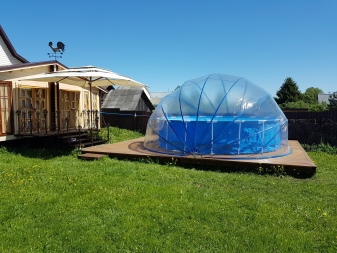

Aluminum
The pavilion, which is made of wood-like aluminum profile, is characterized by reliable protection against corrosion and oxidation. During the connection, a rubber seal is used, which protects the structure from negative environmental influences. The advantages of aluminum canopies include the following:
- the opportunity to make the swimming season longer;
- reducing the consumption of electrical energy for heating an artificial reservoir;
- protection of water from pollution;
- the ability to adapt to any customer's requests;
- durability;
- practicality.
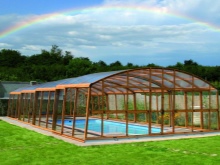

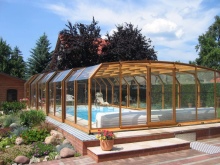
Double-glazed windows
It is recommended to use double-glazed windows in case of year-round use of an artificial reservoir. The more chambers a material has, the less its heat loss. A decent option for an energy-saving coating is one that has gas between the glasses.
but double-glazed windows are not only expensive, but also weigh a lot, moreover, they are quite fragile... With a strong impact, this coating will shatter into small fragments, which can seriously injure yourself. To eliminate broken glass, you will need to drain all the water from the pool.
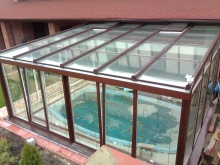


Forms
Pavilions can be installed on a pool of any type and shape. The most common canopies are in the form of a dome and a cascade. The most simple and affordable are arched structures, they do not exceed 350 cm in height. For this reason, they can be used not only to keep water clean, but also as a recreation area.
Another option has a more interesting base in the form of one straight and a second curved wall. One of the popular forms of a pool canopy is one that consists of half-transparent vertical walls and an arched roof. This pavilion is quite spacious, with access to water from all 4 sides.
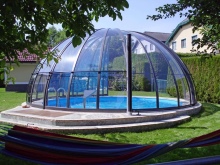
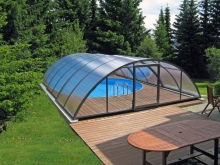
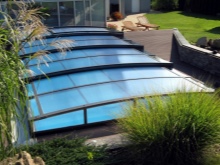
How to choose?
To keep the pool clean throughout the year, the owner should purchase a pavilion. If the shed is to be used as a closed winter resting place, the best option would be a stationary pavilion made of durable glass. The canopies made of double-glazed windows additionally insulate the room, and then in winter you can swim in the pool under them. It is better to use a polycarbonate product in the country or on the site of a country house exclusively in the warm season. Such structures are not only safe, fire resistant and durable, but also have an affordable cost.
As for the choice of the pavilion shape, it is better to mount a spherical canopy with sliding panels for a round pool. For a rectangular design, an arched top is suitable. Snow does not accumulate on such roofs, so the sheds serve for a long time.
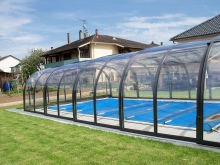
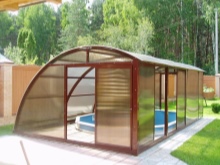
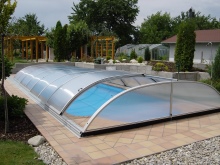
Operating tips
Most often, the owners of artificial reservoirs install stationary and sliding canopies on their site, which are made of aluminum and polycarbonate. It is worth listening to the advice of experts on their operation.
- Make ventilation in the pavilion. Some canopy manufacturers have taken this point into account. Ventilation can be organized by regular ventilation by opening the doors, as well as pushing the sections of the structure. Ventilation significantly increases the lifespan of the canopy.
- Always take weather conditions into account. To prevent the pavilion from being damaged by gusts of wind, it is worth carefully fixing its sections and closing the doors.
- Clean the structure. The pavilions should be washed with clean water under strong pressure. If you want to use a detergent, it is better to give preference to a liquid one.
- Remove snow from the roof. In case of heavy snowfall, it is worth making sure that the snow does not linger on the roof of the canopy, as this can damage the structure.
- Mobile pavilions use in the summer, and for the winter to fold and clean into the room.
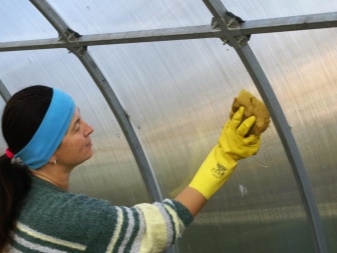
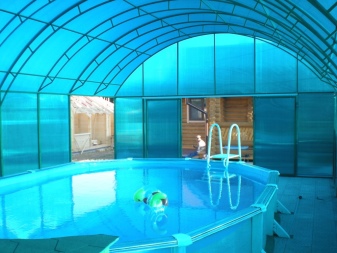
Manufacturers
When choosing a pavilion, you should give preference to a quality product from a reliable manufacturer, since everyone is planning long-term use of the structure. When buying a canopy, you should pay attention to the reviews about the manufacturer. Today Czech pavilions, as well as Russian-made roofs, are in good demand. It is better for the manufacturer to install the structure himself.
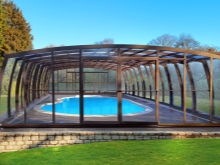
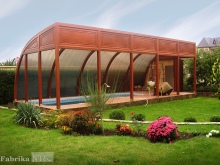
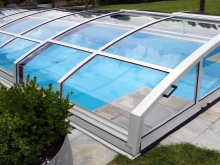
How to do it yourself?
To make a polycarbonate canopy in the country with your own hands, you first need to create sketches. The manufacturing procedure consists of several stages.
- Installation of the base. To install a pool with a sliding pavilion, it is necessary to fill in a concrete tape on which the guide rails will be attached, and along which the sections will roll back. The depth of the concrete strip should not exceed 0.6 m. The number of rails directly affects the width of the foundation. First, you need to dig a trench, pour 20 cm of sand or rubble on its bottom. After that, the formwork is mounted, the walls are covered with roofing material.
On the inner side of the trench, a reinforcement cage of 2 levels is fixed. The last step in this procedure is concrete pouring.
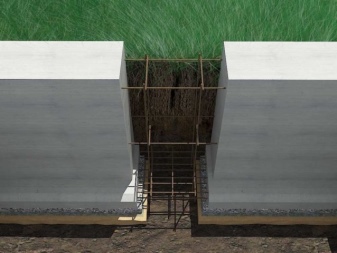
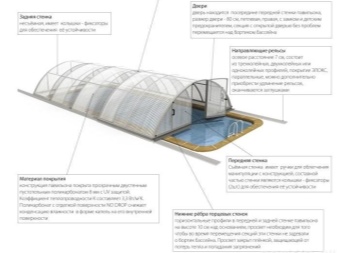
- Frame construction. If desired, the frame can be made both collapsible and non-collapsible. A non-separable structure must be welded. The assembly of the structure begins with the installation of racks. On top of the supports, an element is mounted in the form of an arc, which will become a roof. After assembling the racks and arcs, you need to connect them with girders. The fastening of the profiles is carried out horizontally with the distance between the purlins in a meter or 50 cm. The installation of the purlin can be from profile scraps.
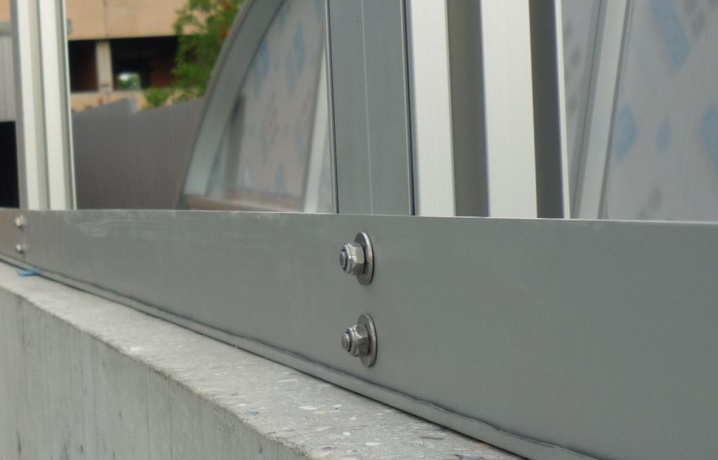
- Frame sheathing. The last step in assembling the awning is glazing with polycarbonate. At this point, the frame should be assembled, the welding bayonets should be ground, and each of the structural elements should be painted. Polycarbonate glazing starts from the roof, for this a sheet of material is laid on the frame, and the markings are made on it. It is worth drilling holes in the attachment points. Fixation is done with self-tapping screws and sealing washers. After sheathing the roof, you can move on to the walls. The last stage of work is to close the ends of the polycarbonate with plugs to prevent the penetration of moisture and dust inside.
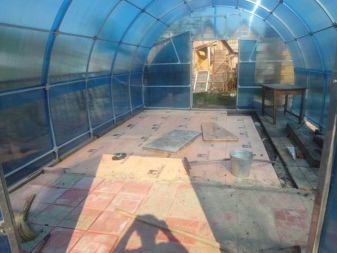
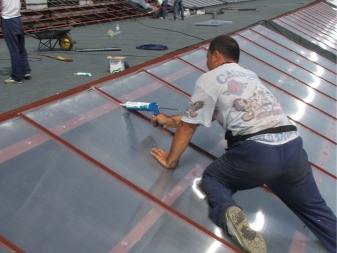
Installation of the Meridian sliding pool enclosure in the video below.



































































The comment was sent successfully.